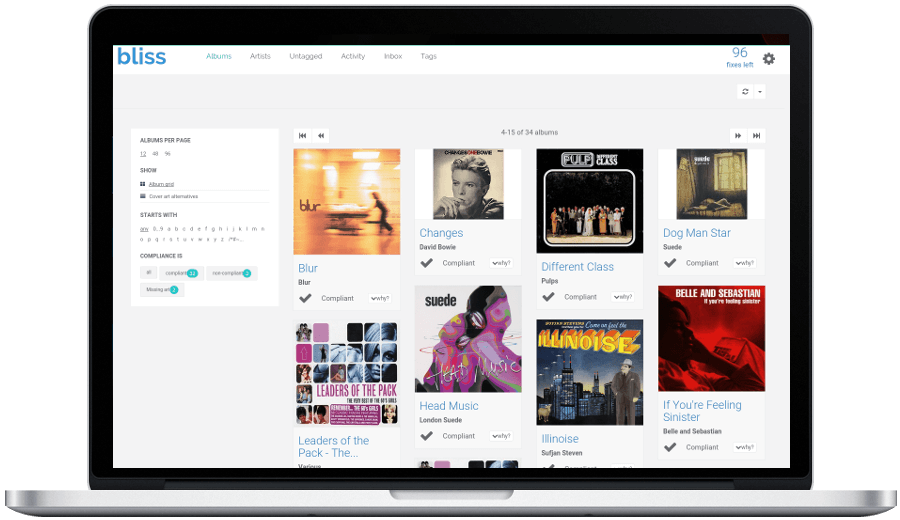
Organize your cloud assets to support governance, operational management, and accounting requirements. Well-defined naming and metadata tagging conventions help to quickly locate and manage resources. These conventions also help associate cloud usage costs with business teams via chargeback and showback accounting mechanisms.
MediaMonkey (Windows, Basic: Free; Gold: $19.95) MediaMonkey is a popular iTunes alternative among Lifehacker readers and also a rather robust tag management tool to boot. Once you have your music.

Define your naming and tagging strategy as early as possible. Use the following links to help you define and implement your strategy:
Note
- Purpose of naming and tagging. Accurately representing and naming your resources is essential for security purposes. In the event of a security incident, it's critical to quickly identify affected systems, what functions those systems support, and the potential business impact.
- Automatic tagging. Add tags automatically to orders, products and customers matching certain criteria. The app is really straightforward. You just need to setup your rules and the app will take care of tagging your orders, products and customers that match the criteria. Forget about adding tags manually and save a huge amount of time!
Every business has its own organizational and management requirements. These recommendations help start a discussion with your cloud adoption teams. As the discussion proceeds, use the template below to document the naming and tagging decisions you make when aligning these recommendations to your specific business needs.
Download the naming and tagging conventions tracking template.
Best Auto Tagging Appointment
Purpose of naming and tagging
Best Auto Tagging Apps
Accurately representing and naming your resources is essential for security purposes. In the event of a security incident, it's critical to quickly identify affected systems, what functions those systems support, and the potential business impact. Security services such as Azure Security Center and Azure Sentinel reference resources and their associated logging and alert information by resource name.
Azure defines naming rules and restrictions for Azure resources. This guidance provides detailed recommendations to support enterprise cloud adoption efforts.
Changing resource names can be difficult. Establish a comprehensive naming convention before you begin any large cloud deployment.

Naming and tagging strategy

Organize your cloud assets to support governance, operational management, and accounting requirements. Well-defined naming and metadata tagging conventions help to quickly locate and manage resources. These conventions also help associate cloud usage costs with business teams via chargeback and showback accounting mechanisms.
MediaMonkey (Windows, Basic: Free; Gold: $19.95) MediaMonkey is a popular iTunes alternative among Lifehacker readers and also a rather robust tag management tool to boot. Once you have your music.
Define your naming and tagging strategy as early as possible. Use the following links to help you define and implement your strategy:
Note
- Purpose of naming and tagging. Accurately representing and naming your resources is essential for security purposes. In the event of a security incident, it's critical to quickly identify affected systems, what functions those systems support, and the potential business impact.
- Automatic tagging. Add tags automatically to orders, products and customers matching certain criteria. The app is really straightforward. You just need to setup your rules and the app will take care of tagging your orders, products and customers that match the criteria. Forget about adding tags manually and save a huge amount of time!
Every business has its own organizational and management requirements. These recommendations help start a discussion with your cloud adoption teams. As the discussion proceeds, use the template below to document the naming and tagging decisions you make when aligning these recommendations to your specific business needs.
Download the naming and tagging conventions tracking template.
Best Auto Tagging Appointment
Purpose of naming and tagging
Best Auto Tagging Apps
Accurately representing and naming your resources is essential for security purposes. In the event of a security incident, it's critical to quickly identify affected systems, what functions those systems support, and the potential business impact. Security services such as Azure Security Center and Azure Sentinel reference resources and their associated logging and alert information by resource name.
Azure defines naming rules and restrictions for Azure resources. This guidance provides detailed recommendations to support enterprise cloud adoption efforts.
Changing resource names can be difficult. Establish a comprehensive naming convention before you begin any large cloud deployment.
Naming and tagging strategy
Best Auto Tagging App
A naming and tagging strategy includes business and operational details as components of resource names and metadata tags:
The business side of this strategy ensures that resource names and tags include the organizational information needed to identify the teams. Use a resource along with the business owners who are responsible for resource costs.
Adobe photoshop cs6 mac trial download. The operational side ensures that names and tags include information that IT teams use to identify the workload, application, environment, criticality, and other information useful for managing resources.
Next steps
Learn about the considerations for defining your naming convention your Azure resources and assets, and review example names for resources and assets in Azure.
